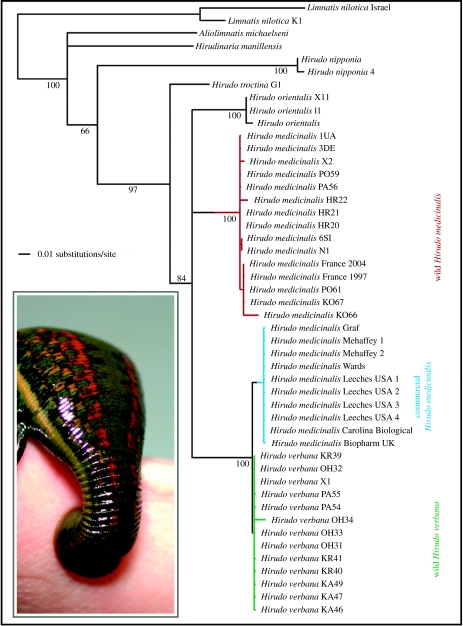Figure 2.
DNA barcoding distinguishes European medicinal leech species. Multiple equally parsimonious trees varied on resolution within each of the wild or commercial medicinal leech clades, and on whether Hirudo orientalis is sister to H. medicinalis or to the other European medicinal leeches. Clade support values are non-parametric bootstrap proportions. Mean genetic distances: 8.55% between wild H. medicinalis and H. verbana; 1.81% between leeches commercially marketed Hirudo medicinalis and wild H. verbana; 9.03% between leeches commercially marketed Hirudo medicinalis and wild H. medicinalis; 8.60% between H. orientalis and the other wild Hirudo species. Branch lengths are based on a GTR +G model of nucleotide substitution. A commercially obtained Hirudo medicinalis (i.e. H. verbana) is shown feeding (inset).

